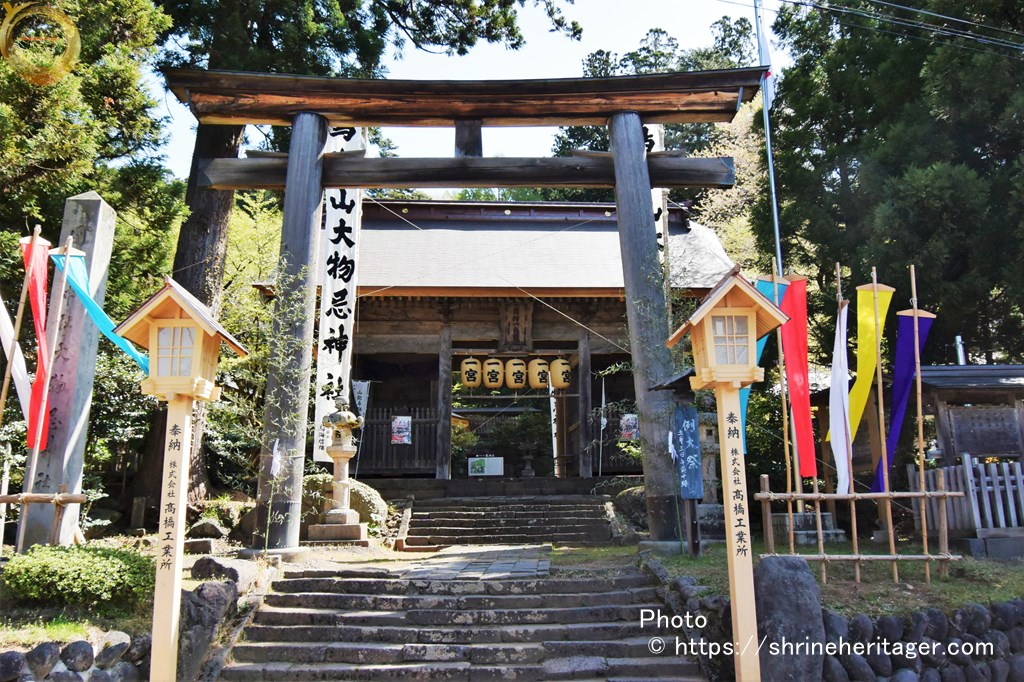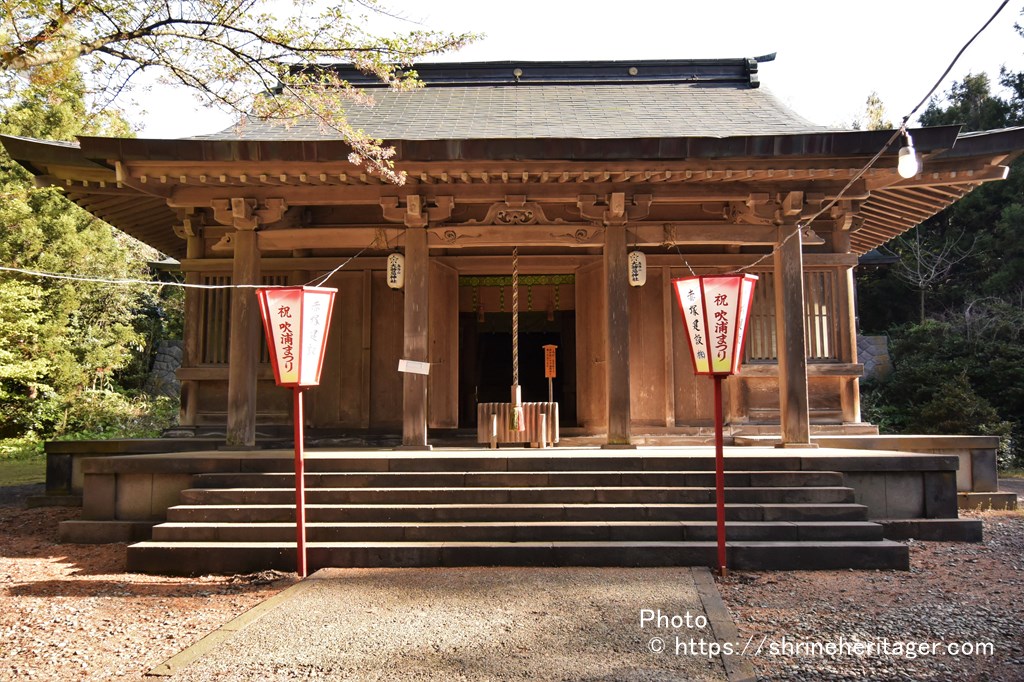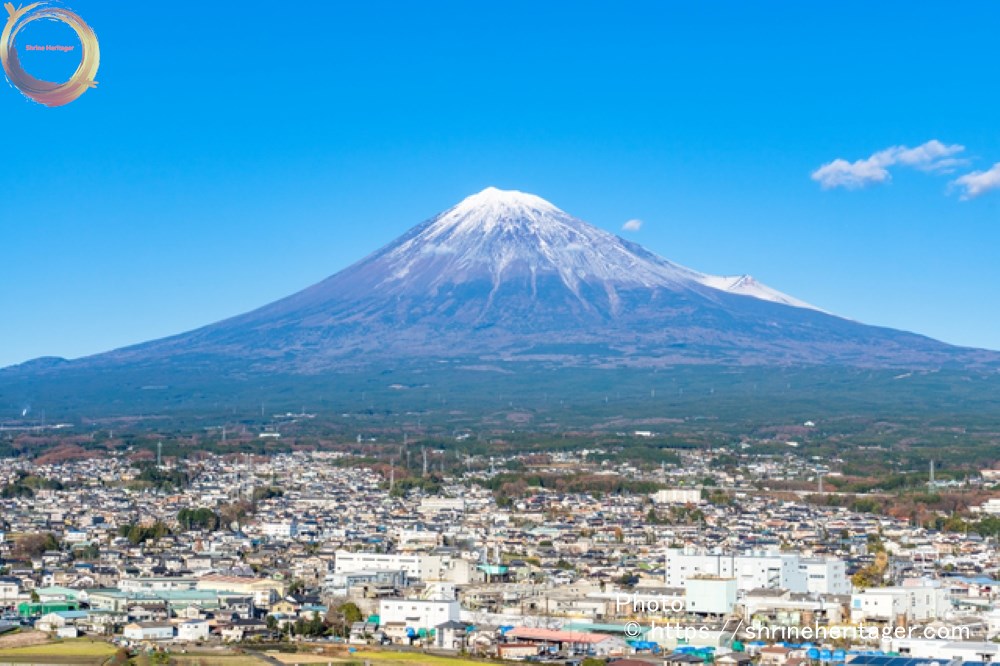(chokaizan omonoimi shrine) is called Dewakuni Ichinomiya. The head office (Okumiya) sits on the summit of Mt. Satomiya is seated in two places, The creation of the shrine of (chokaizan omonoimi shrine) (Waraoka guchinomiya) is handed down to the Emperor Kinmei(欽明天皇) 25 years (more than 1400 years ago)
目次
- 1 1.ご紹介(Introduction)
- 2 この神社の予備知識(Preliminary knowledge of this shrine)
- 3 Visit the Shrine (Pray at the Shrine)
- 4 神社の伝承(Old tales handed down to shrines)
1.ご紹介(Introduction)
The official name of this shrine and how to be called The present address and map I will introduce the history of the god and the shrine enshrined.
【神社名(shrine name)】
(chokaizan omonoimi shrine)
(warabioka kuchi no miya)
[読 み (How to read)]
(ちょうかいざんおおものいみじんじゃ わらびおかくちのみや)
[通称名(Common name)]
【鎮座地 (location) 】
51 Kamigawaraoka Matsugaoka, Yusa Town, Yamagata Prefecture
[地 図 (Google Map)]
【御祭神 (God's name to pray)】
《主》大物忌大神(ohomonoimi no ohokami)
【御神格 (God's great power)】
・五穀豊穣 Pray for good harvest
・海上安全 Maritime safety
・厄除開運 Prayer at an age considered a milestone in life.Bring good luck and happiness.
etc etc
【格 式 (Rules of dignity) 】
・『延喜式神名帳(engishiki jimmeicho)』所載社
・ 出羽国一之宮
・ 別表神社
【創 建 (Beginning of history)】
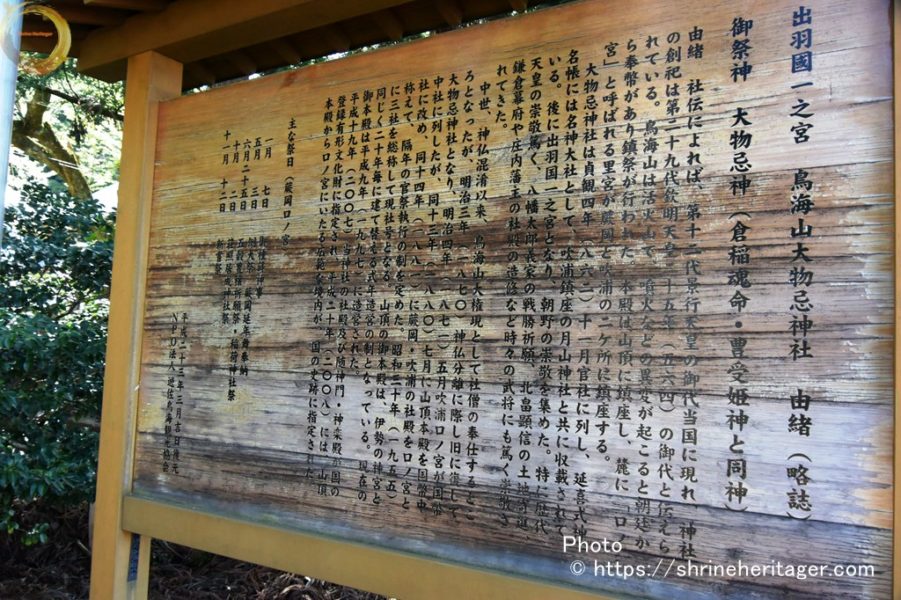
Dewa Kuninomiya (chokaizan omonoimi shrine) History (abbreviated)
The deity of the god of 大物忌大神(ohomonoimi no ohokami)
According to the Yuosha shrine, it appeared in the country of the 12th Emperor 景行天皇, and the creation of the shrine is said to be the 29th Emperor 欽明天皇 25 (564).
Mt. Chokai is an active volcano, and in the event of an eruption or other abnormal event, the royal court enshrined it and held a ceremony. The head office is located at the summit of the mountain,
The main shrine is enshrined at the summit of the mountain, and a village called "Kuchinomiya" is enshrined at the Nike places in Warabioka and Fukiura.(chokaizan omonoimi shrine) is lined up with the government office in November of 862 (862), and is listed in the Enki Shiki Shrine as Meishin Taisha along with Tsukiyama Shrine of Fukiura Shinza.
It later became Kazunomiya Dewa and gained the respect of Asano. In particular, he was respected by successive emperors, praying for the victory of Tachiyoshi Hachiman, the donation of land by Kennobu Kitahata, and the shrines of the Kamakura Shogunate and the Shonai lord.
Since the middle of the Middle Ages, the shrines and Buddhist monasteries have been renowned to serve as shrine priests, but when the Shinto and Buddhist temples were separated in 1870,
the shrine was restored to the old shrine, and in May 1871 (Meiji 4).
Fukiuraguchinomiya was lined up with Kokuchuchusha, but in July 1880,
the summit main shrine was changed to Kokuchuchusha, and in 1881,
the shrines of Warabioka and Fukiura were called Lonomiya. Established a system of biennial official festival execution. In 1955 (Showa 30), the three companies are collectively called the current company name.The main shrine at the top of the mountain, like the shrine of Ise, is rebuilt every 20 years under the ceremonial construction. The current Gotenden was built in 1997.
In 2007, the shrine of this shrine and the Zuijinmon and Kagura halls were designated as registered tangible cultural assets of the country, and in 2008, a wide precinct from the summit main hall to Kuchinomiya, It has been designated as a National Historic Site.Main festival days (Warabioka Kuchinomiya)
1月7日 御種蒔神事
5月3日 例大祭 蕨丘延年舞奉納
6月25日 五穀豊穣祈願祭・稲荷神社祭
10月2日 荘照居成神社祭
11月12日 新嘗祭平成23年3月吉日 復元 NPO法人遊佐鳥海観光協会
From the precincts guide board
【由 緒 (history)】
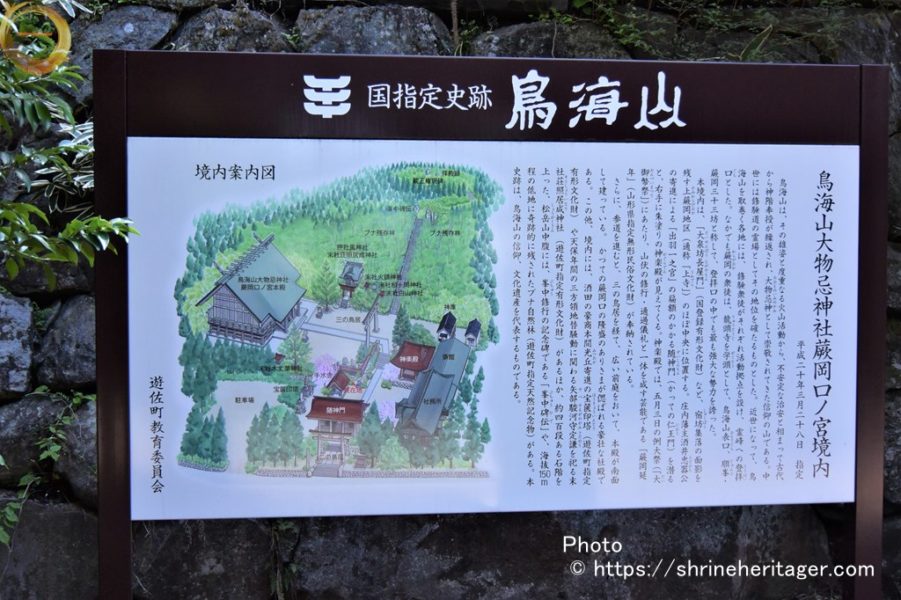
chokaizan omonoimi shrine(warabioka kuchi no miya) On the precinct
March 28, 2008
The designated Mt. Chokai was repeatedly shrine- served since ancient times due to its unstable appearance and repeated volcanic activity, which has been repeated since ancient times. It is a mountain of religion that has been revered as the god of things.In the Middle Ages, it was established as a sacred place for Shugendo.
In the modern age, Shugen people established their own activity bases around Mt. Chokai, and they decided to worship the sacred mountain.
Among them, the warabioka people, with Ryuzu-ji as the head of their school, were called Mt. Chokaiyama, Bunko and Sanjubo Waraboka, and boasted the most powerful force in the worship.The main precincts are located almost in the center of the Kamiwarabioka area (commonly known as "Kamidera"), which retains the image of the shukubo village, such as "Oizumibo Nagayamon" (a nationally registered tangible cultural property).
When you dive through the flat and flat Zuishinmon (formerly the Niomon) of "Dewa Kazunomiya" donated by Tadashi Sakai, the lord of Shonai, you can see the vermilion Kagura hall on your right. At the Kaguraden, at the annual festival on May 3rd (``Daimonbei Matsuri''), the warrior enrollment (Yamagata prefecture designated intangible) is a performing art that is integrated with the training and passage rituals of Yamabushi. Folk cultural property) is dedicated.Furthermore, as you proceed along the approach, you will find the main shrine facing south facing the Santorii gate, with a large front yard. This is a magnificent shrine that reminds us of what once was the rise of Warabioka.
In addition, in the precincts,
in the precincts of Sakata,
Mitsuoka's donation to the Houki Into (a tangible cultural property designated by Yusa Town) and the Yasushi Suruga Mamoru Sadakken are involved in the turmoil during the Tenpo years.
In addition to the Sueshaso Terui Nari Shrine (Yusa Town's designated tangible cultural property) that enshrines, there is a stone monument with about 400 steps on the hillside of Mt. There is a "den" and a beech natural forest (a natural monument designated by Yusa Town) miraculously left in a lowland about 150 m above sea level.This historic site represents the faith and cultural heritage of Mt. Chokai.
Precinct guide map Yusa Town Board of Education
From the precincts guide board
【境内社 (Other deities within the precincts)】
A shrine of Kaze Shrine風神社 and Sho Terui Nari Shrine荘照居成神社の合殿
摂社 風神社(fu shrine)
末社 荘照居成神社(sosho inari shrine)(遊佐町指定有形文化財)
《Master》Suruga Yabe《主》矢部駿河守定謙
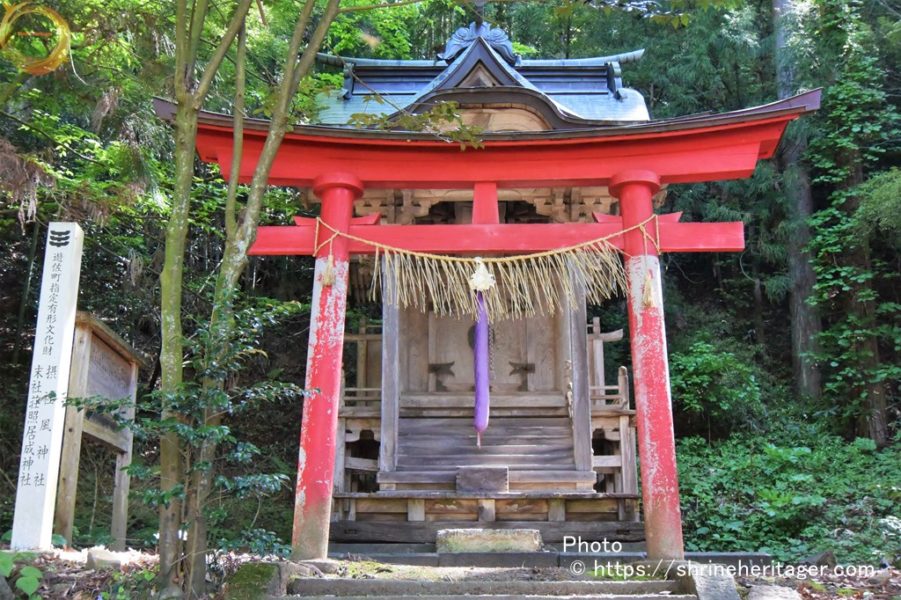
The festival god enshrines Edominamicho magistrate "Suruga Yabe Sadakage Ken" 「矢部駿河守定謙」
at the Tenpo 11th year (1840) in the three-sided territorial relocation riot (Shonai clan to Echigo Nagaoka, Echigo Nagaoka clan to Kawagoe, Kawagoe clan to Shonai). In Edo, efforts were made to prevent the shonai clan from being transposed, and the territory replacement was suspended. Afterwards, it was honed to enshrine the "Survey Yabe Shunken Yabe" Edominamicho who was imprisoned by the Matsudaira family of the Iwana Kuwana clan and died unemployment. 3 years (1846) Built by the request of local residentsInformation board summary
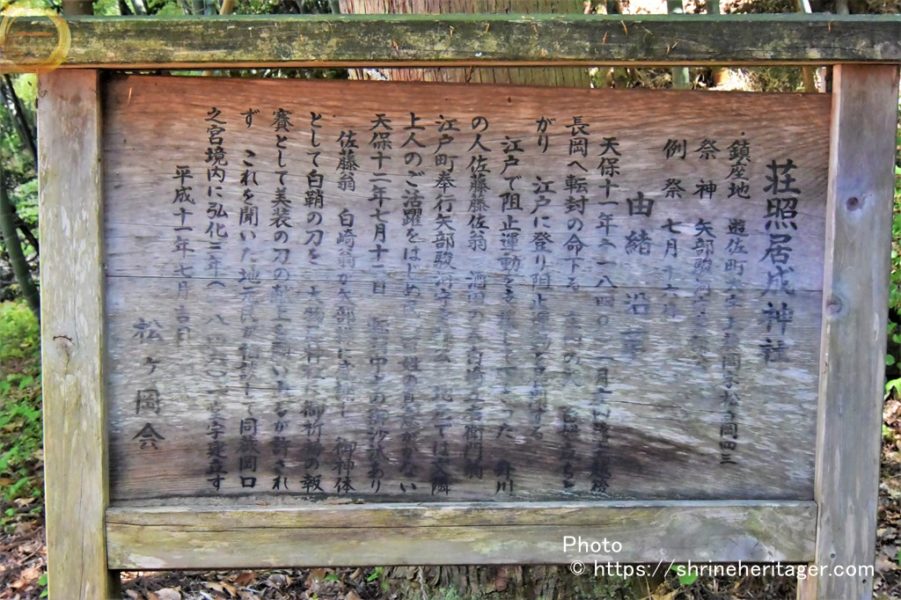
3 companies on the right side line up towards the main shrine
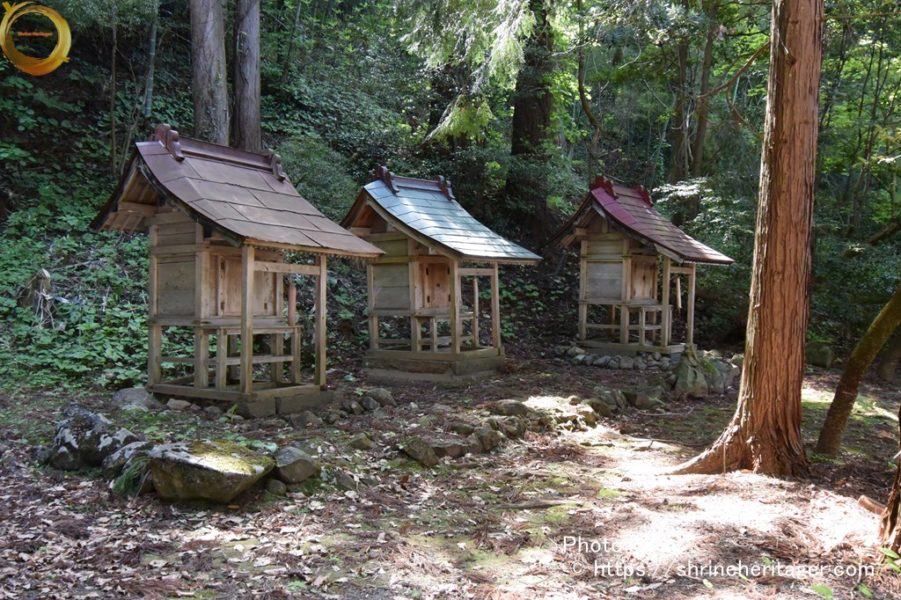
From the left
・末社 火鎮神社(hozume shrine)
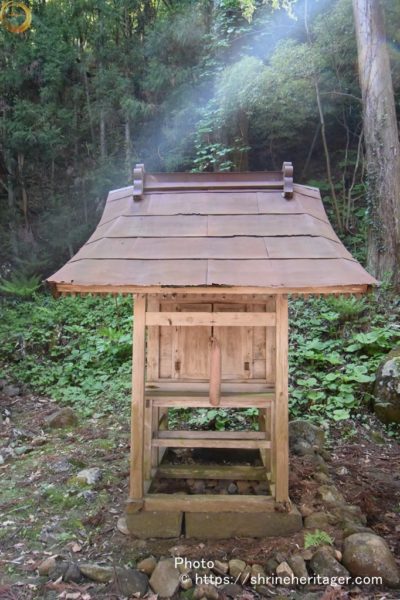
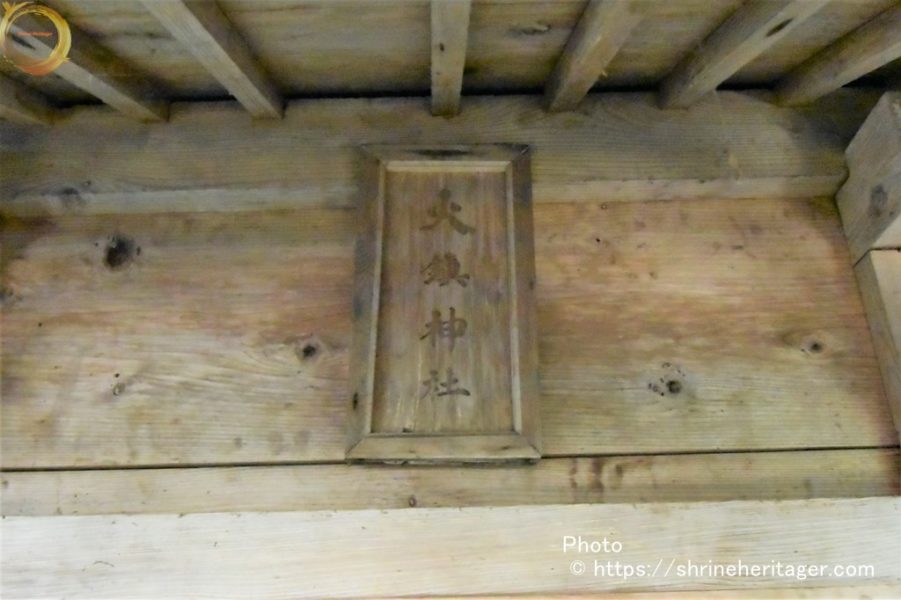
・末社 松ケ岡神社(matsugaoka shrine)
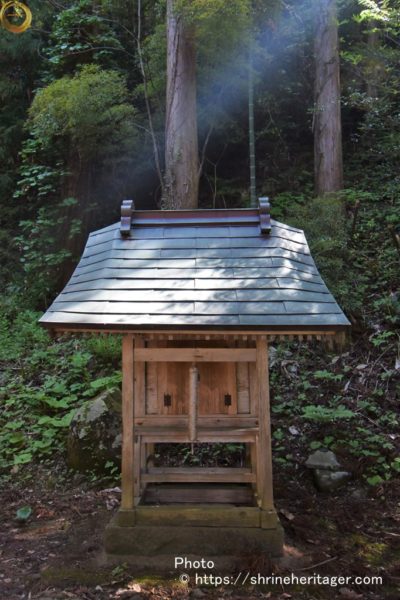
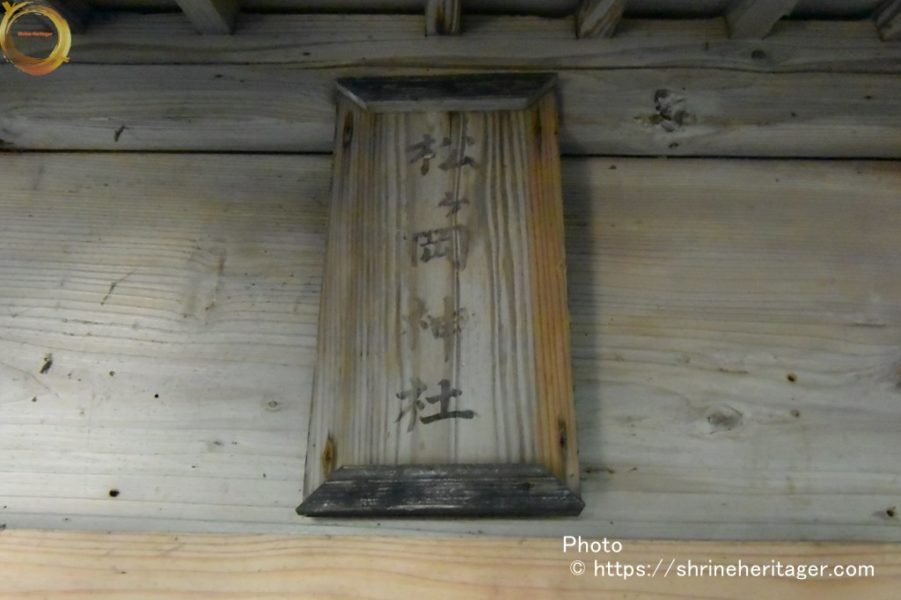
・末社 白山神社(shirayama shrine)
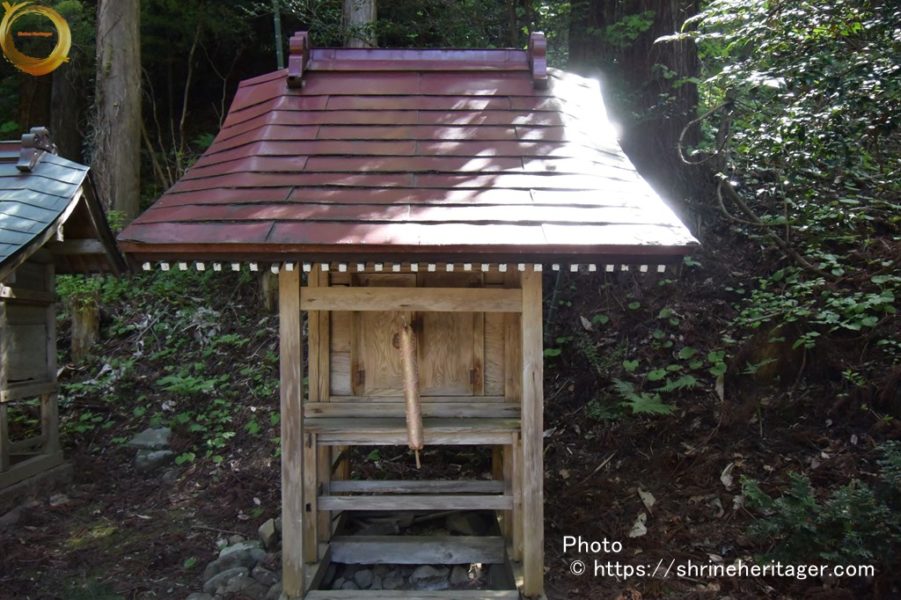
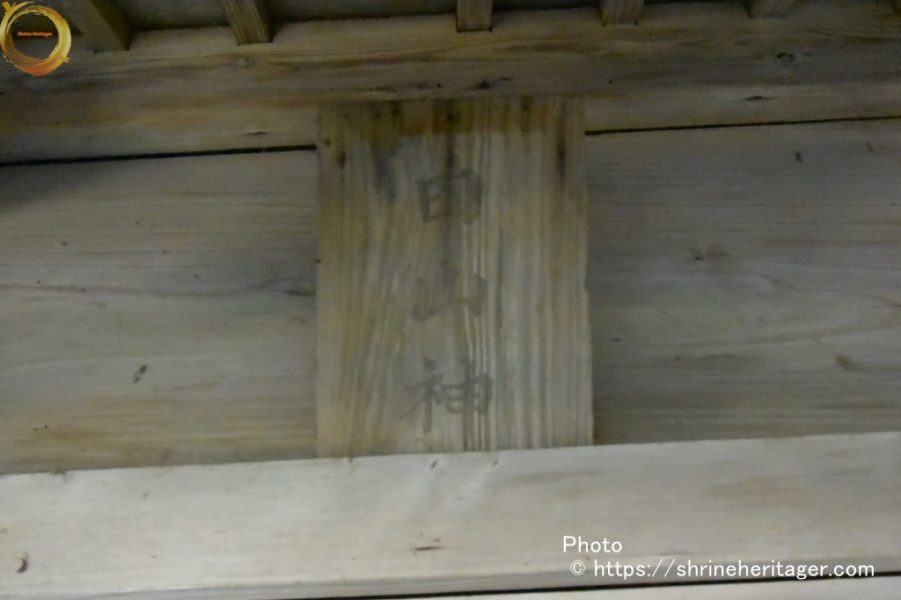
To the main shrine, on your left hand
・末社 木丈葉神社(kidakeha shrine)
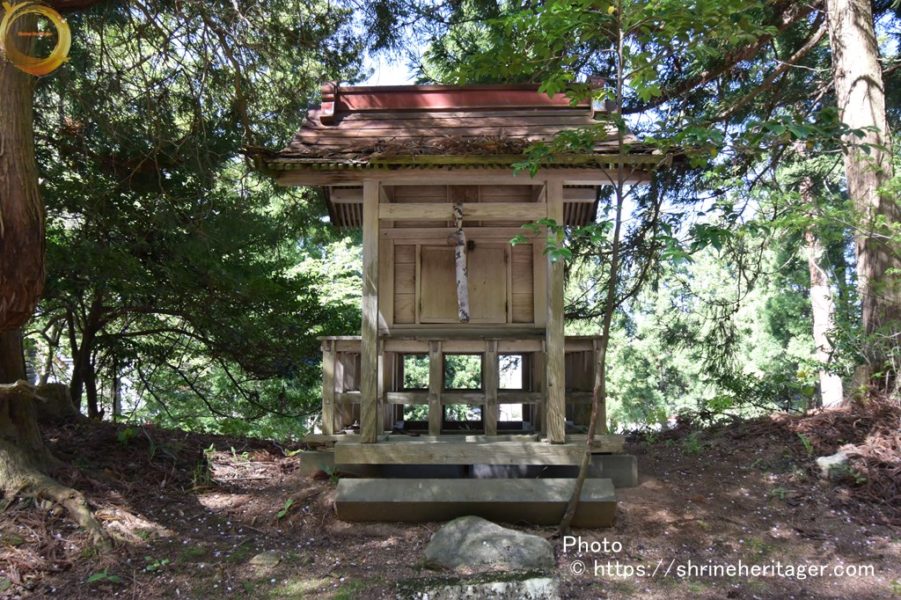
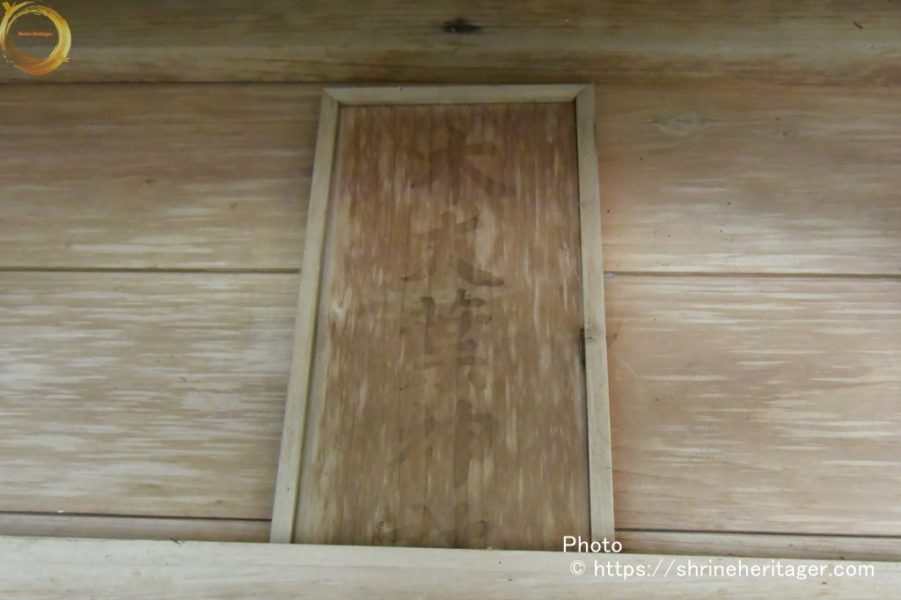
スポンサーリンク
この神社の予備知識(Preliminary knowledge of this shrine)
This shrine has a long history.
『延喜式神名帳(engishiki jimmeicho)』The two volumes that are regarded as important among all 50 ritual- style scrolls created by the Imperial Court during the middle Heian period are called " engishiki jimmeicho " (edited in December 927). Approximately 1100 years ago, the name of "2861 company" and the number of gods enshrined there are listed in the list of government offices (shikinaisha) nationwide.
【延喜式神名帳】(engishiki jimmeicho)The shrine record was completed in December 927 AD.
[旧 行政区分](Old administrative district)
( Number of gods' seats )東山道 382座…大42(うち預月次新嘗5)・小340
[旧 国 名 ](old county name)
( Number of gods' seats )出羽国 9座(大2座・小7座)
[旧 郡 名 ](old region name)
( Number of gods' seats )飽海郡 3座(大2座・小1座)
[名神大 大 小] Ceremony Meishin Taisha式内 名神大社
[旧 神社名 ] 大物忌神社(貞・名神大)
[ふ り が な ](おほものいみの かみのやしろ)
[How to read] (ohomonoimi no kamino yashiro)
https://www.digital.archives.go.jp/DAS/meta/listPhoto?LANG=default&BID=F1000000000000004146&ID=M2014101719562090086&TYPE=&NO=画像利用
国立国会図書館デジタルコレクション 延喜式 刊本(跋刊)[旧蔵者]紅葉山文庫
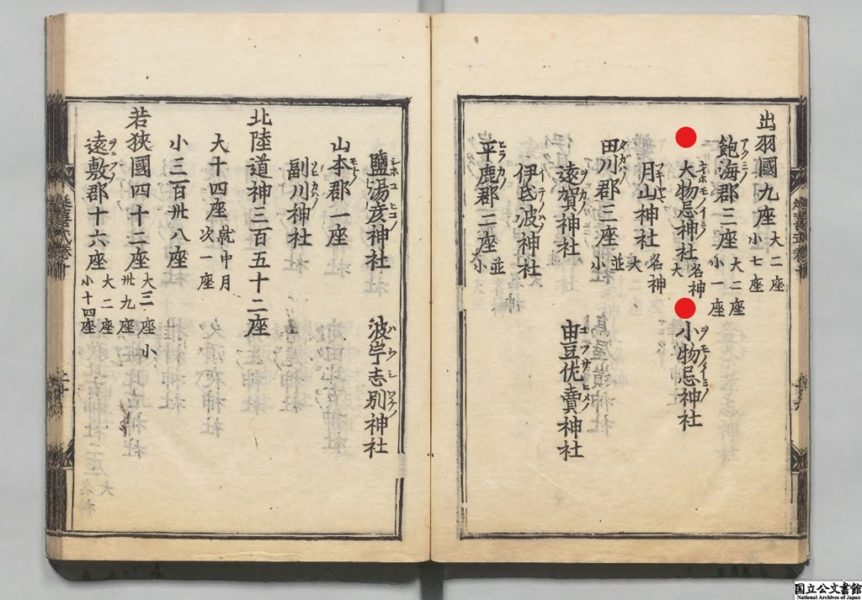
【オタッキーポイント】(Points selected by Japanese Otaku)
I will introduce the preliminary knowledge that will make you interested in this shrine from an otaku perspective.
About "「鳥海山(chokai san)」" where the main shrine of 大物忌神社(omonoimi shrine) sits
The main shrine of 大物忌神社(omonoimi shrine) is located at the top of an active volcano with an altitude of 2,236 m 「鳥海山(chokai san)」, which extends between Yamagata and Akita prefectures.
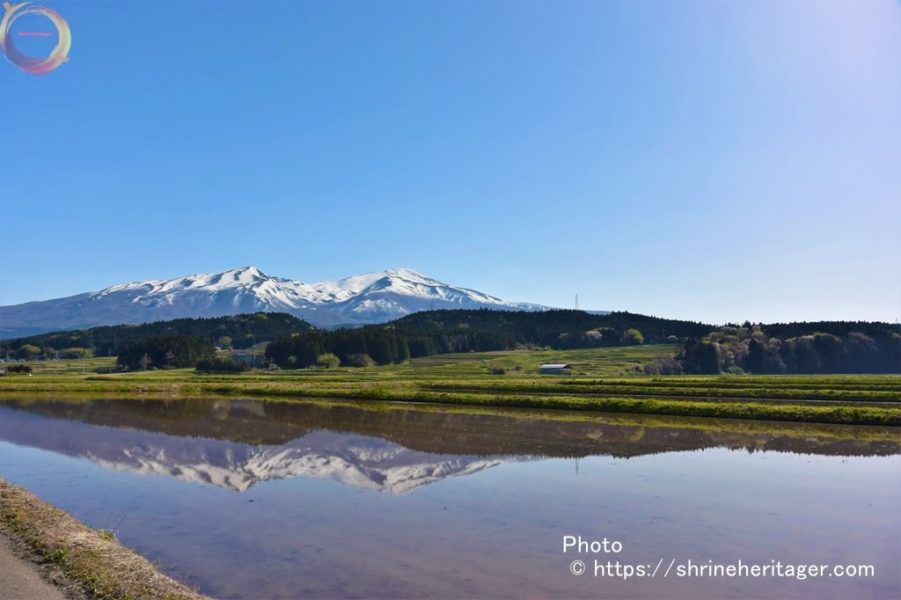
In the old name, there was no mountain name 「鳥海山(chokai san)」
In the history of Rokugoku (orthodox history) such as "続日本後紀(shoku nihon koki)" (completed in 11th year of Jogan (869)),
this mountain is named "ohomonoimi no ohokami" of Zinza in Sakumi-gun Was called
The reason why it was called in this way and was revered as the Meishin Shrine was the period
when the Yamato Imperial Court was struggling to build a Ritsuryo state. The period of Keiun (704-708) and Wado (708-715) It coincides with the time when the Ezo expedition that started from the north to the beginning of the present north of Akita Shonai and beyond
At that time, it is said that this region was covered with primeval forest and there were Ezo that were chased in the south.
which had been chased to the south . In such a situation, Chokaisan, an active volcano that constantly explodes and occasionally explodes It seems to have been awe-inspiring for the Imperial Court
Under this circumstance, "Ohomonoimi no ohokami" is said to be "monument" (to hate sinister uncleanness as a sacrifice).
The theory that Yamato worshiped in advance as a god (active volcano) that causes mountain explosions was partly due to the fact that mountain worship was active.
It is supposed that it was supposed to have been
Controversy over "Ichinomiya" ・吹浦(fuku ra)and蕨岡(warabi oka) debate
As a mountain of training for Shinto and Buddhism, as a new god
Chokai san has an altitude of 2,236m. Mountain worship is at its peak.
At the main climbing entrance
・Yajima/Otaki (Kigata entrance) Akita Prefecture side
・Fukiura and Warabioka Yamagata Prefecture had four locations
It is a complicated aspect involving denominational and Buddhist denominational conflicts, etc. Different believers form a certain power at each entrance, and it was very common for them to disagree with each other.
In the Edo period, a controversy began to emerge, arguing for the right place for a village at the foot of the mountain by insisting on the management and supervision right of the "Gongendo at the summit" (currently the "head office"). government is also involved in controversy, such as Han "will continue to vigorously endlessly followed
Gotenden at the top of the mountain
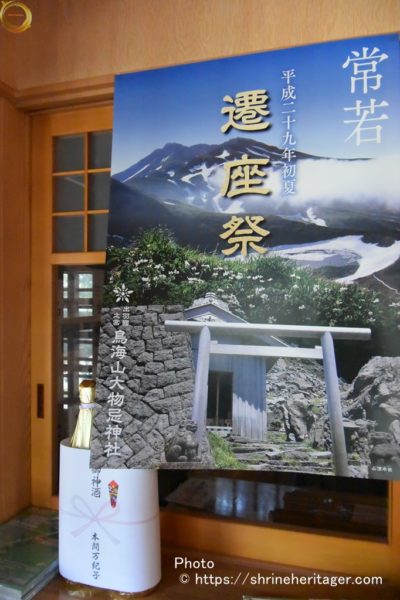
・Fukiura precedes Warabioka when responding to the Shinto-Buddha Separation Ordinance in 1868 (Meiji 1868)
・Members of Fukiura devote all Shinto to Meiji (3rd year of Meiji) The next company name will also be the Daimonsai Shrine.
・May 1871 (Meiji 4) The Daimonsai Shrine in Fukiura will be lined up with the Kokusun Chusha, and it will also be possible to manage the Gongendo on the summit.
The warriors of Warabioka have repeatedly petitioned Yamagata Prefecture and the Meiji government from Shinobu after Shinobi to try to regain their rights, but the litigation also fails. I thought
・August 7, 1880 (August 7, 1880) The left minister, Arisugawa Miya, will give a notice to his son, "The Gongendo at the summit will serve as the main shrine for the big shrine, and the big shrines of Fukiura and Warabioka will be used as the shrine (later the mouth). Nonomiya)”
・This notification was implemented in 1884 and the conflict between the two parties was settled.
The content of this irregular ritual system, which was issued as an eclectic proposal after a long debate,
is that "Kuchinomiya" of "Fukuura" and "warabi oka" is "Kokunomiya" The priest, who has a shrine office as a ``great gods shrine'',
is that both shrine offices will replace the shrine at the mountaintop main shrine located in Fukiura every year for one year.
鳥海山大物忌神社(chokaizan omonoimi shrine)吹浦(fuku ra)口ノ宮Kuchinomiya article also please visit
-

chokaizan omonoimi shrine (fuku ra kuchi no miya)
鳥海山大物忌神社(chokaizan omonoimi shrine) is Ichinomiya Dewa Kuninomiya. There are 3 shrines with Mt. The Satomiya called "kuchi no miya" is located in two places, "「吹浦(fuku ra)」" and "「蕨岡(warabi oka)」". It is an old company
続きを見る
Characteristics of warabi oka's history and luck
As mentioned above, there is a power struggle at each of the trails in the holy place of Shugendo, "chokai san," and there was a complicated relationship involving sectarian confrontations.
Among them, Warabioka Kuchinomiya is located at the southwest foot of Mt. Chokai.
It is said that during the Edo period, it controlled the key to the "Gongen-do of the summit" (currently "Headquarters") and was a great power of 33 Sobo (25 "Fukiura" and 18 Yajima).
Characters of the “warabi oka” palace's auspicious “Chinkaisan Kiseki Hiki” (Hoei 6th year 1709) and “Chokaisan Engi Wasan” (Kaei 5th year 1852) written around this time are the actors. It is a point to explain the premise that (role small angle) was opened.
・It was named "Mt. Chokai" because the "Gokai no Mori" was seen when the actor (role Kokaku) first climbed the mountain at "Mt. Chokai".
・Because evil spirits called "long and long legs" lived in "Mt. Chokai" and plagued the villagers, in the era of Emperor Tenmu(天武天皇), a pilgrim who continued his training(役小角)defeated the devil and opened the mountain trail.
This kind of auspiciousness is also said to be due to the intention to counter it by advocating a theory that is older than the theory that was originally founded by "Jikaku Daishi (Enjin)", which is transmitted to "Fukura".
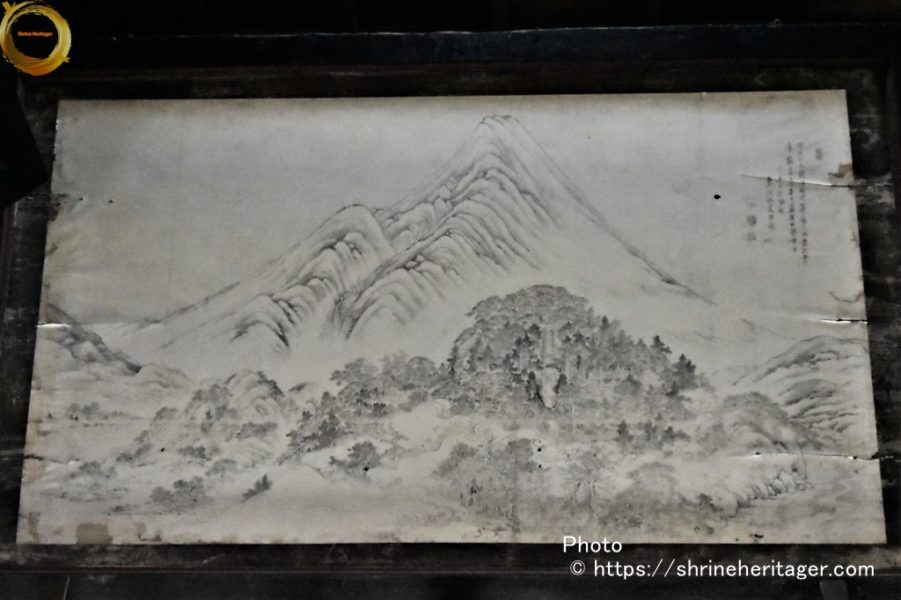
スポンサーリンク
Visit the Shrine (Pray at the Shrine)
I introduce the state when I visited this shrine.
10 minutes by car from JR Yusa Station,
20 minutes by car from Sakai Minato IC on the Nihonkai Tohoku Expressway
When you turn left the position to climb from the plains prefectural road 373 No.
of fields to spread Warabioka "one of Torii" is situated in the case of walk from here.
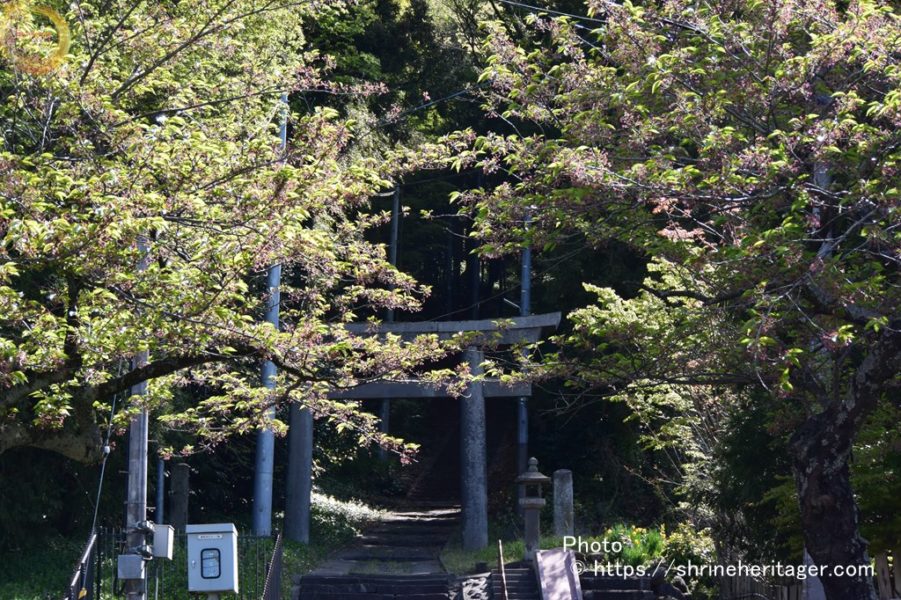
鳥海山大物忌神社(chokaizan omonoimi shrine)
Arrived at (蕨岡口ノ宮)(warabioka kuchi no miya)
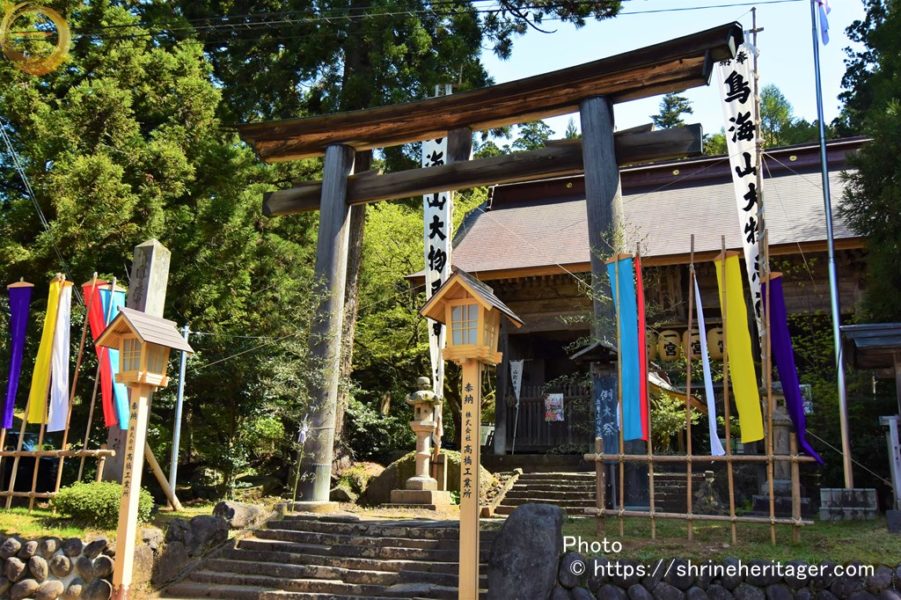
There is a wooden lantern at the entrance to the precincts, "Nino-torii" and "Zuijinmon (formerly Nioumon)"
(chokaizan omonoimi shrine)
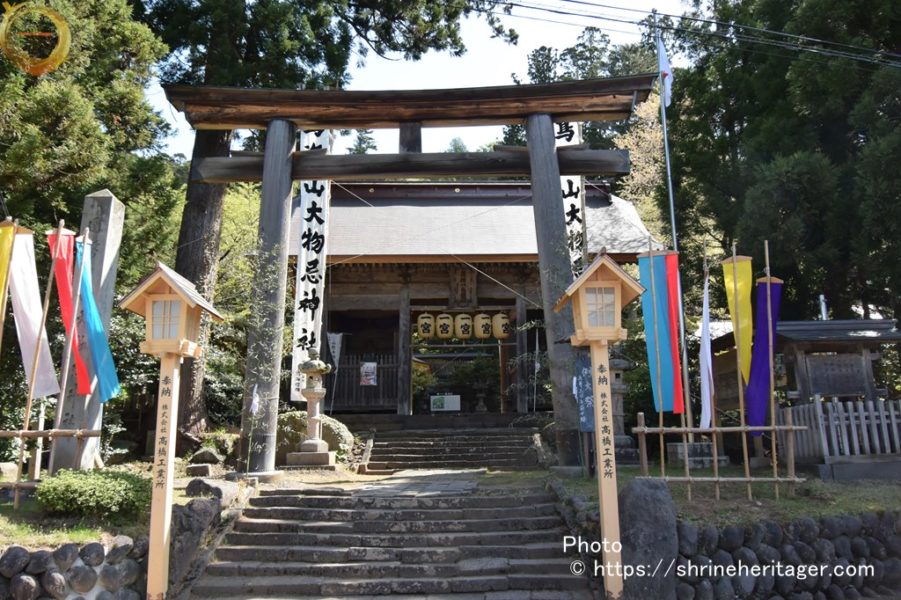
I will bow once and go through "Nii Torii". It will be a festival. There will be a temple called "Mt.
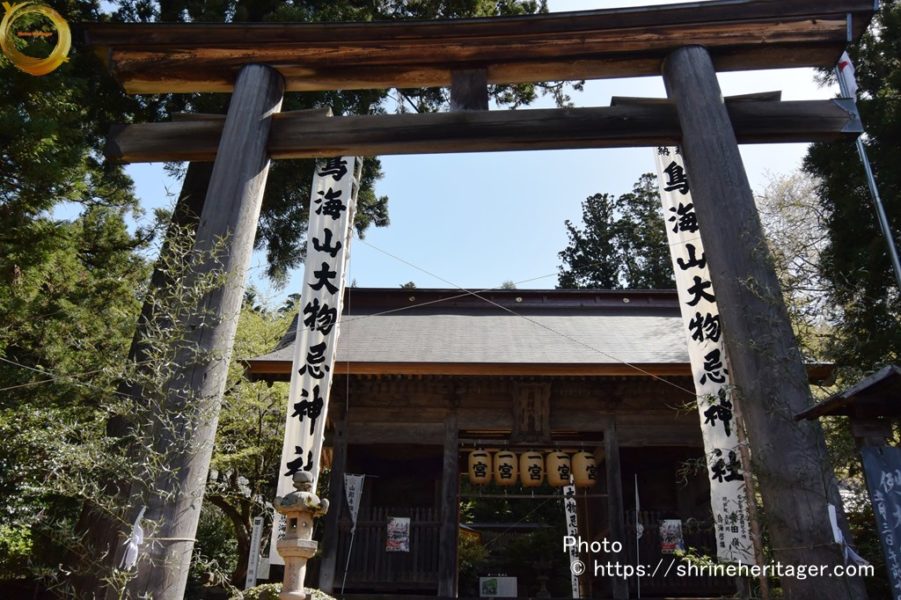
"Zuijinmon (formerly Niomon)" (registered as a national registered tangible cultural property in 2007) will be built.
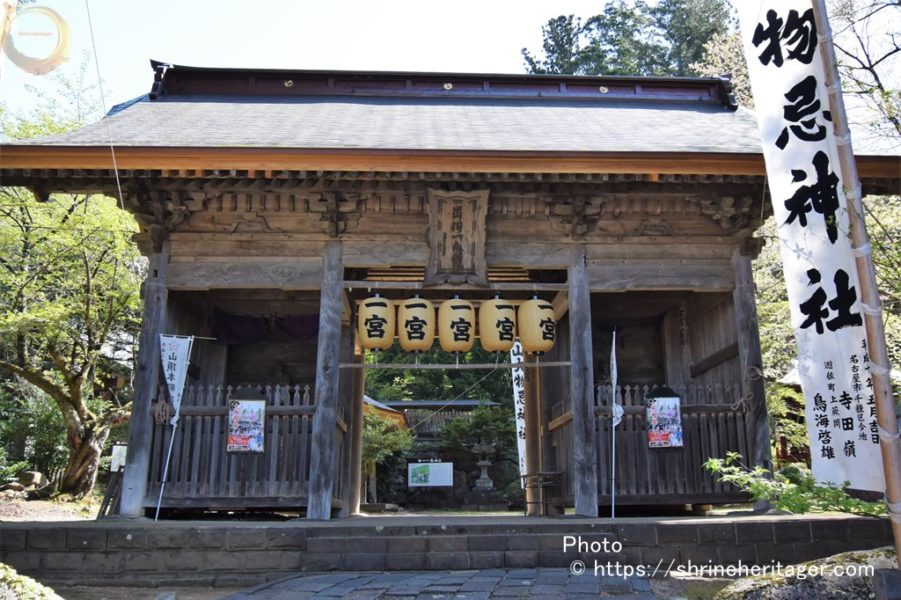
Lanterns of "Ichinomiya" are lined up and "Ideno Kazunomiya" is on the flat
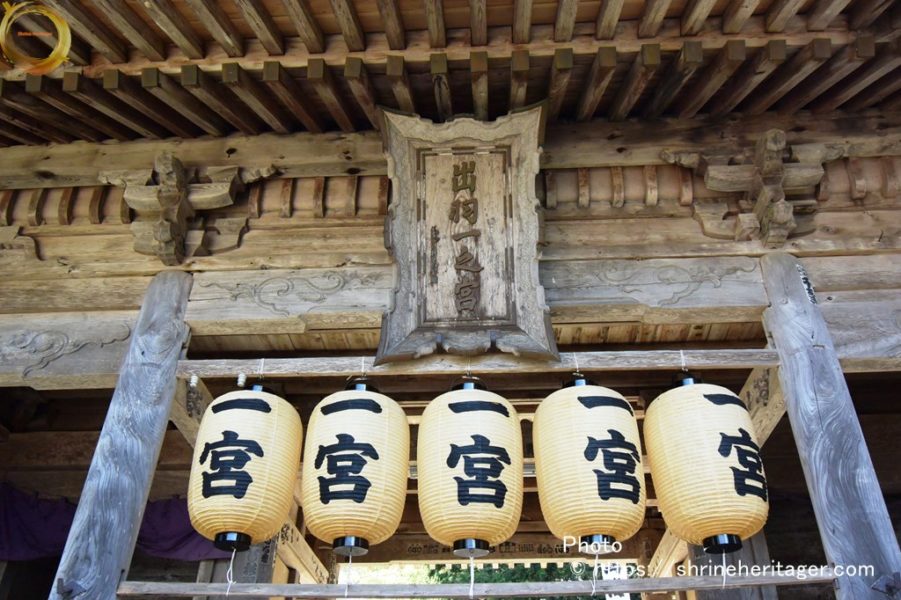
When you pass through the Zuijinmon gate, you will find the "Treasure Seal Tower" on the left hand side of which is the "Treasure Seal Tower" (contributed by Mitsuoka Honma, a merchandiser of Sakata's 12th century (1800)).
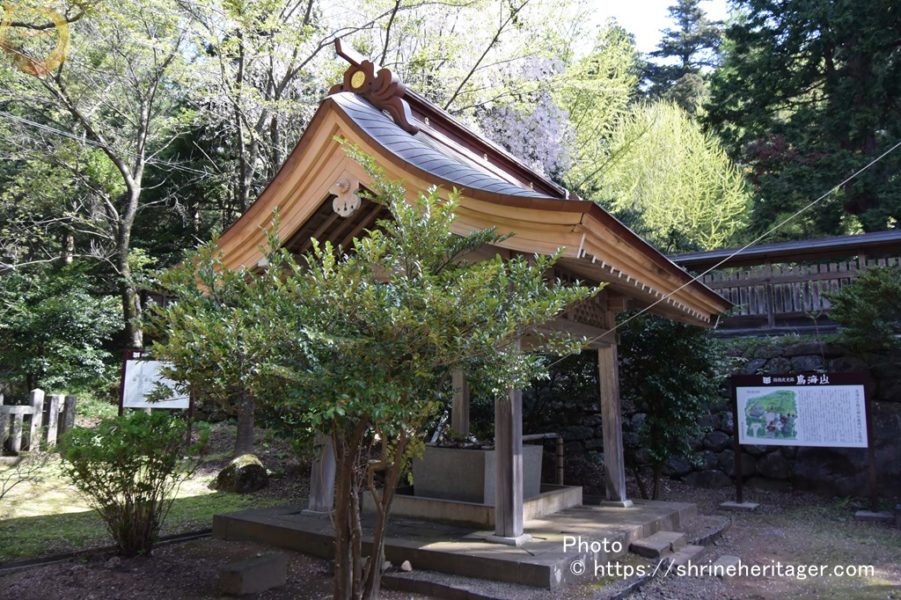
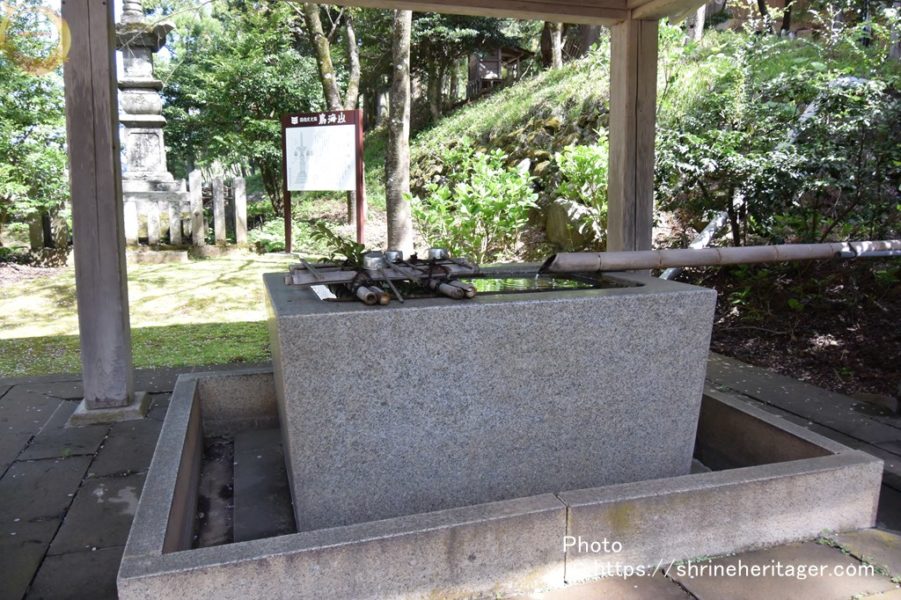
A vermilion Kaguraden (nationally registered tangible cultural property) will be built to the right. It was originally a bell tower (bell tower), but it is said that it was changed to Kaguraden by the 4th year of the Order of Divine Buddhism in Keio.
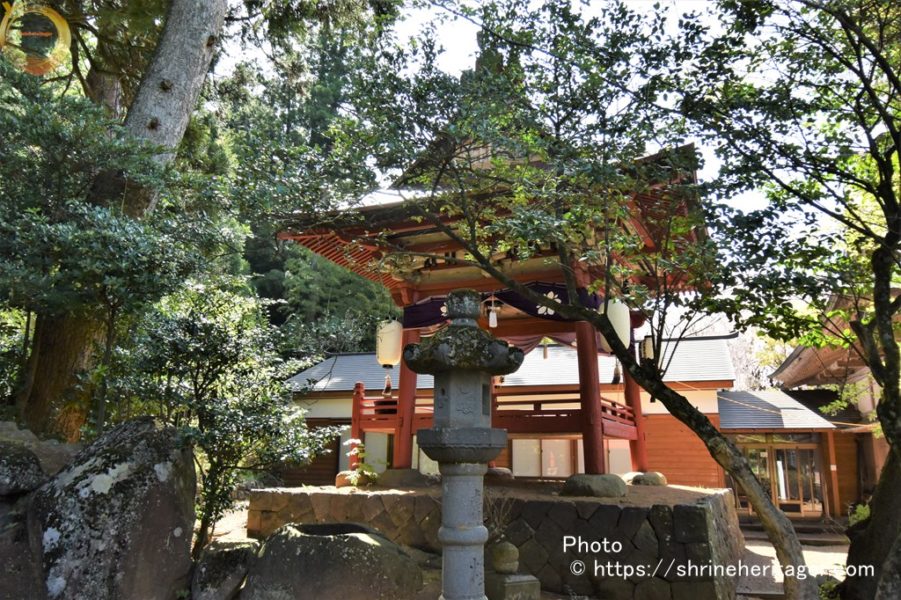
When you go up the stone steps, "Sanno Torii" will be on your left.
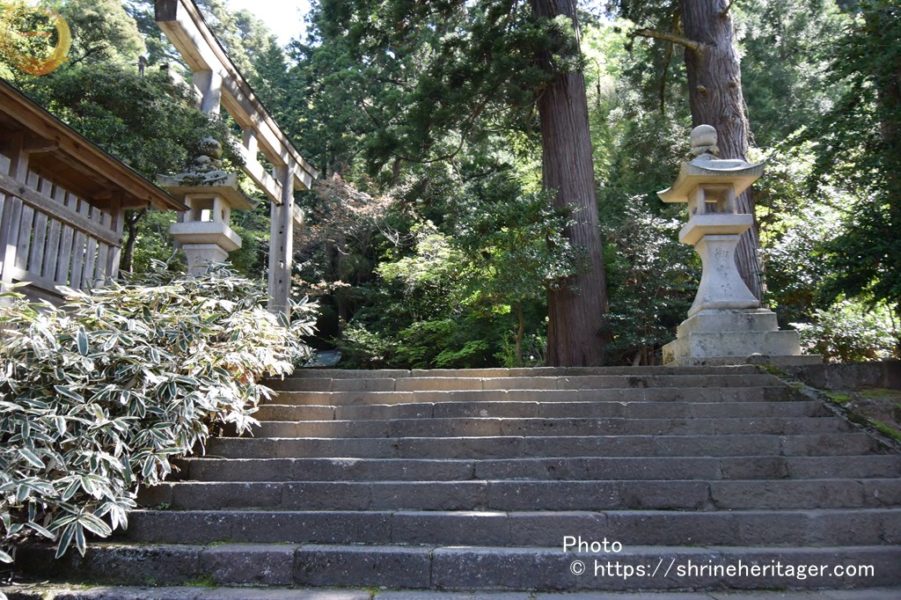
When entering from Zuijinmon, turn left and go to the shrine.
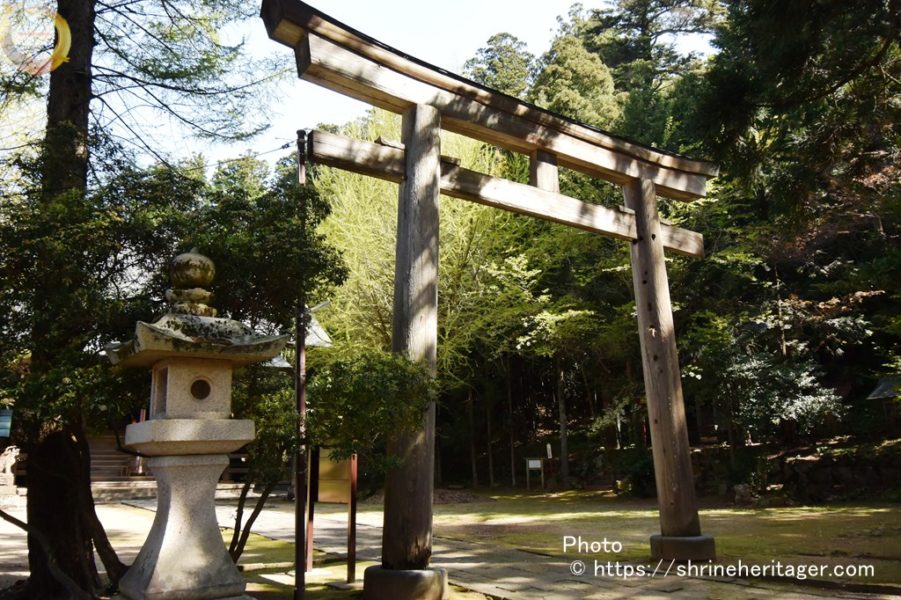
"Main Hall & Hall of worship" (Meiji 29 – Nationally Registered Tangible Cultural Property) is built in front. The main hall has a big roof and is powerful. A Komainu dog sits in front of the main hall.
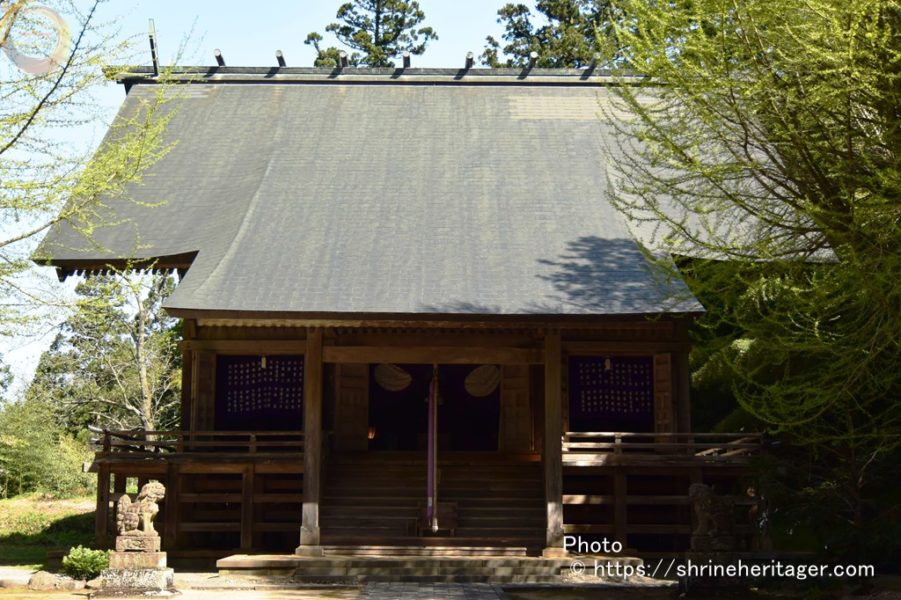
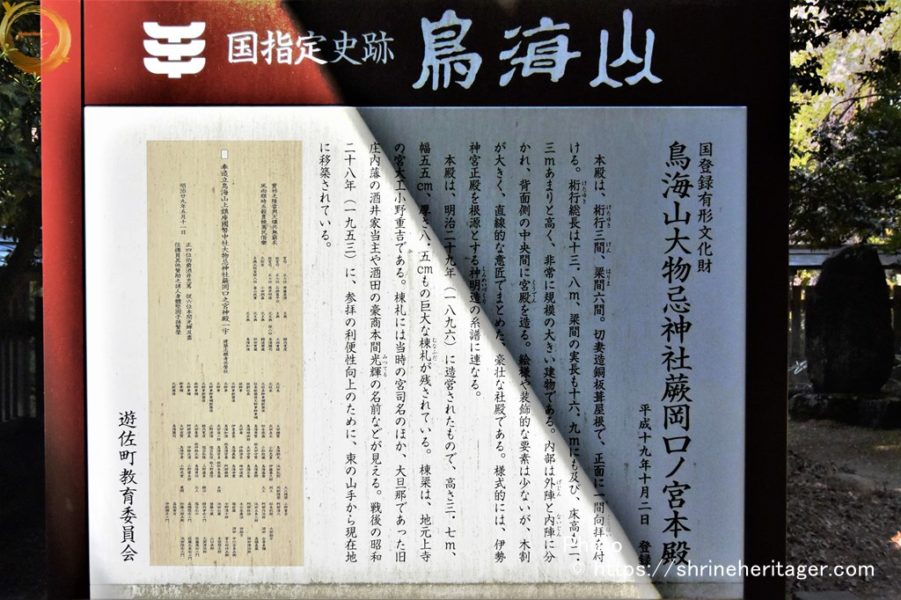
Go to the hall of worship. The flat amount says "Dorigen, Chokaiyama".
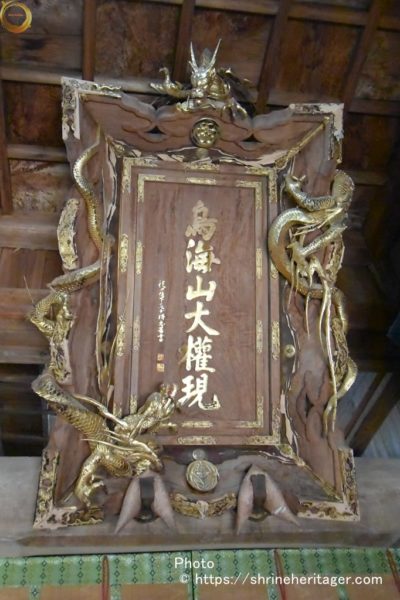
Give a prayer with prayers A prayer that puts both hands together,
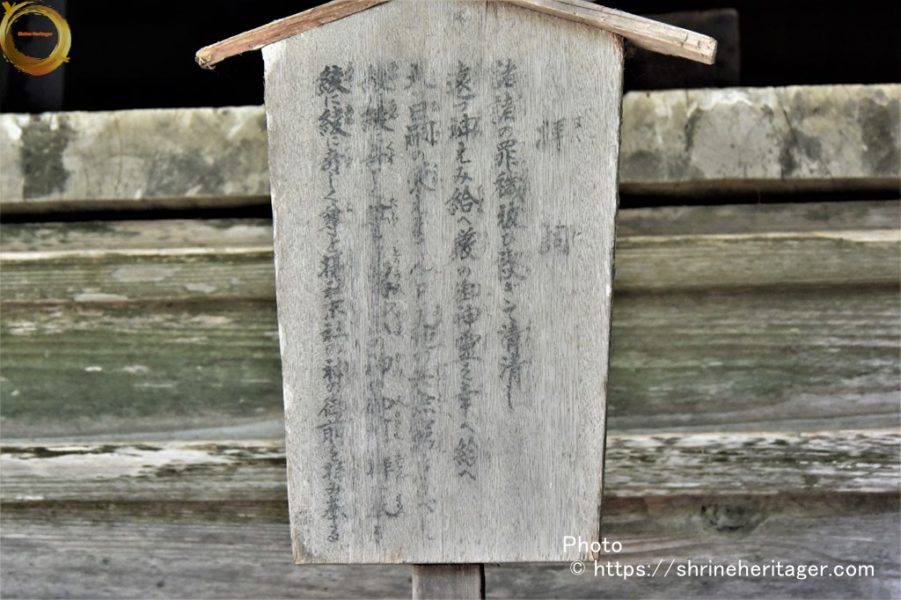
A prayer that puts both hands together, praying to reach the deity of the festival

Since the main hall and the worship hall are integrated, the building has a depth.
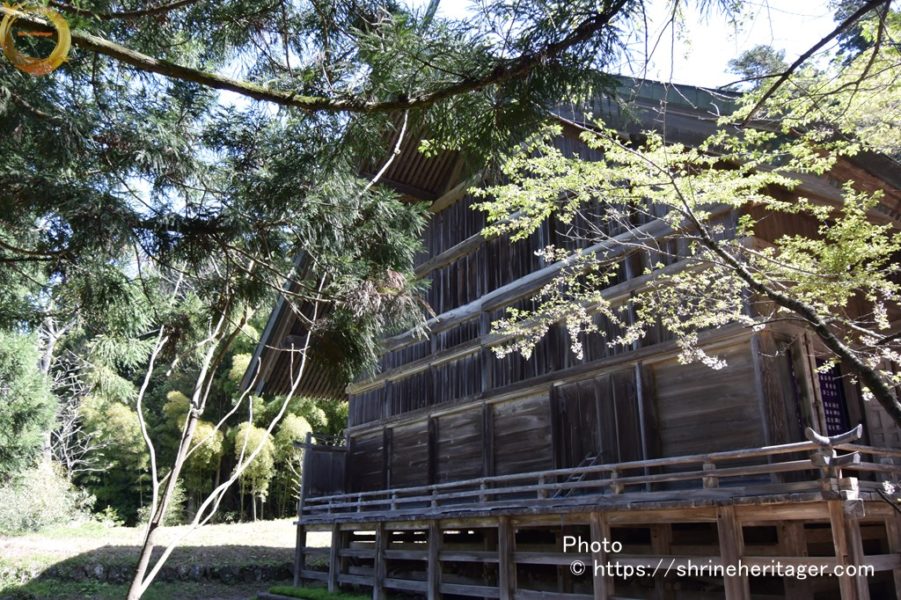
It is a tribute to the precincts of the shrine
On the left hand side towards the main shrine is the Suisha 木丈葉神社(kidakeha shrine)

On the right hand side of the main shrine, the four end companies are lined up.
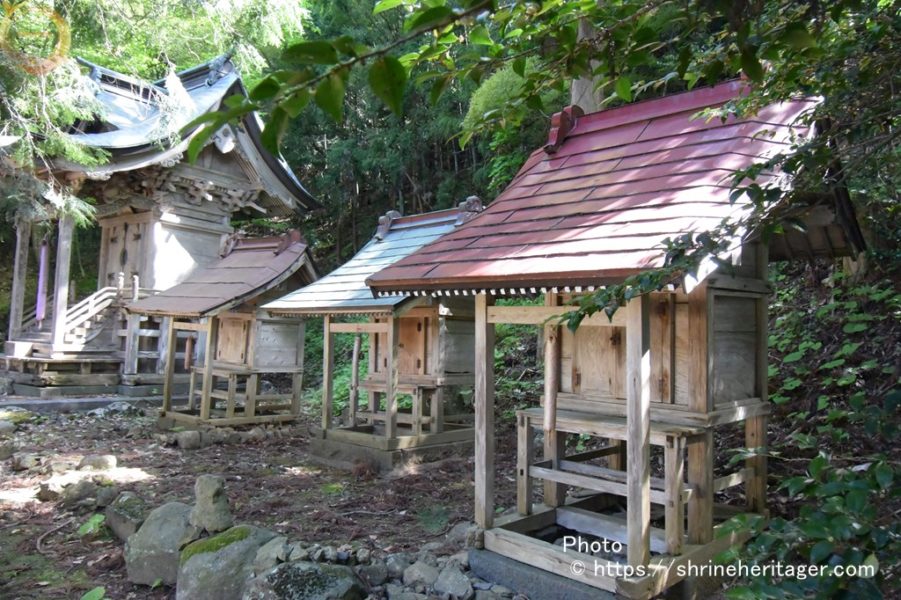
A shrine of Kaze Shrine風神社 and Sho Terui Nari Shrine荘照居成神社の合殿
摂社 風神社(fu shrine)
末社 荘照居成神社(sosho inari shrine)(遊佐町指定有形文化財)
《Master》Suruga Yabe《主》矢部駿河守定謙
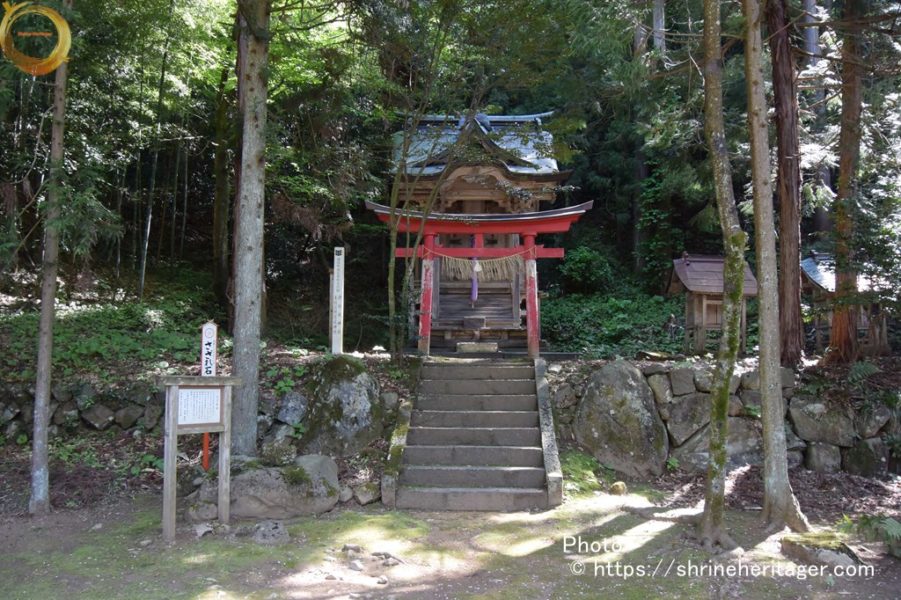
The flat amount says "Fu Shrine/Inari Shrine" Does Inari Shrine mean the same as Inari Shrine?
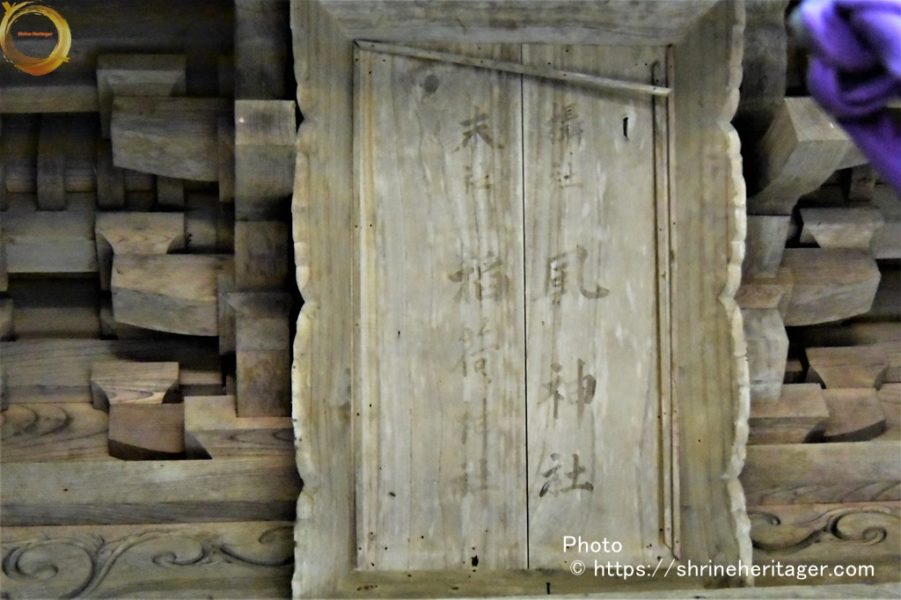
3 companies line up next to it
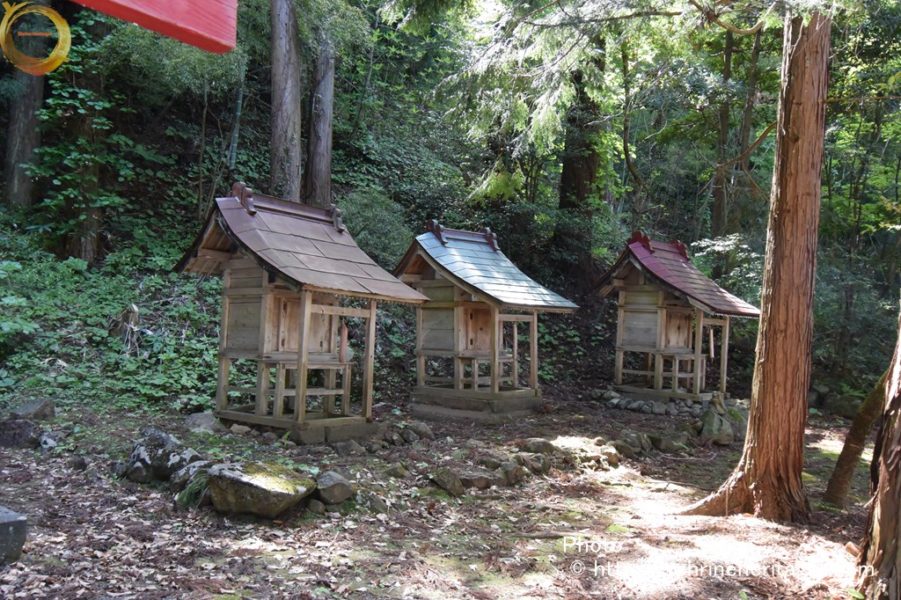
From the left
末社 火鎮神社(hozume shrine)
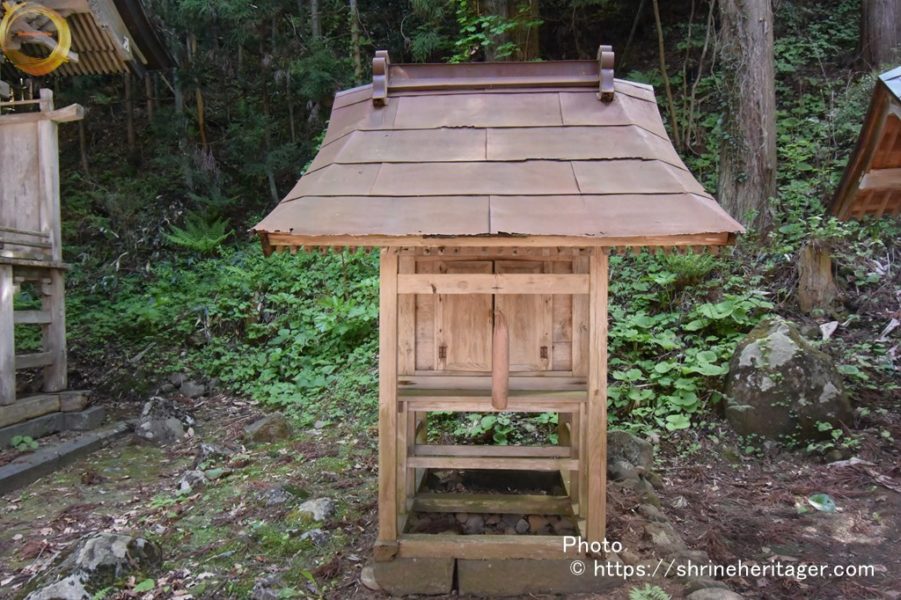
末社 松ケ岡神社(matsugaoka shrine)
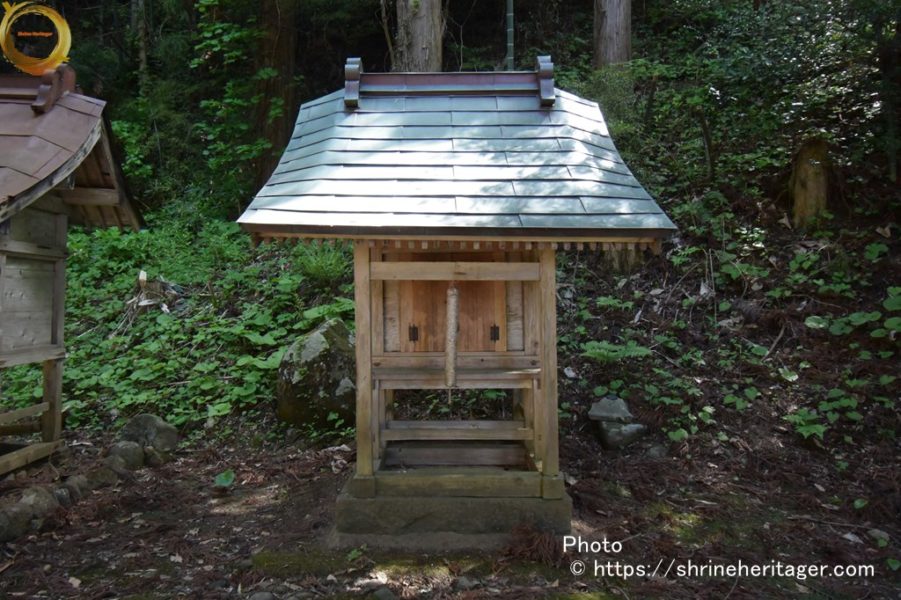
末社 白山神社(shirayama shrine)
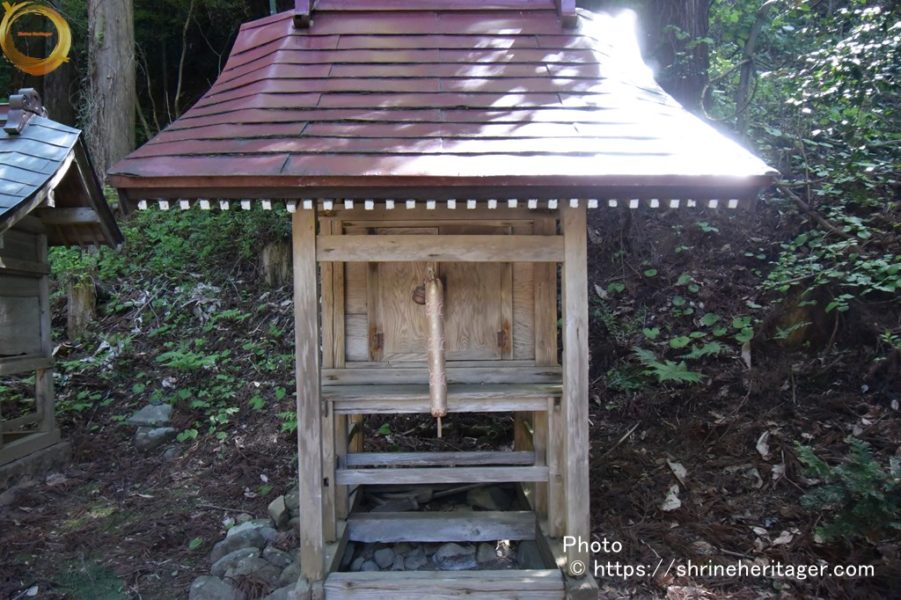
I will return to the approach after leaving the precincts
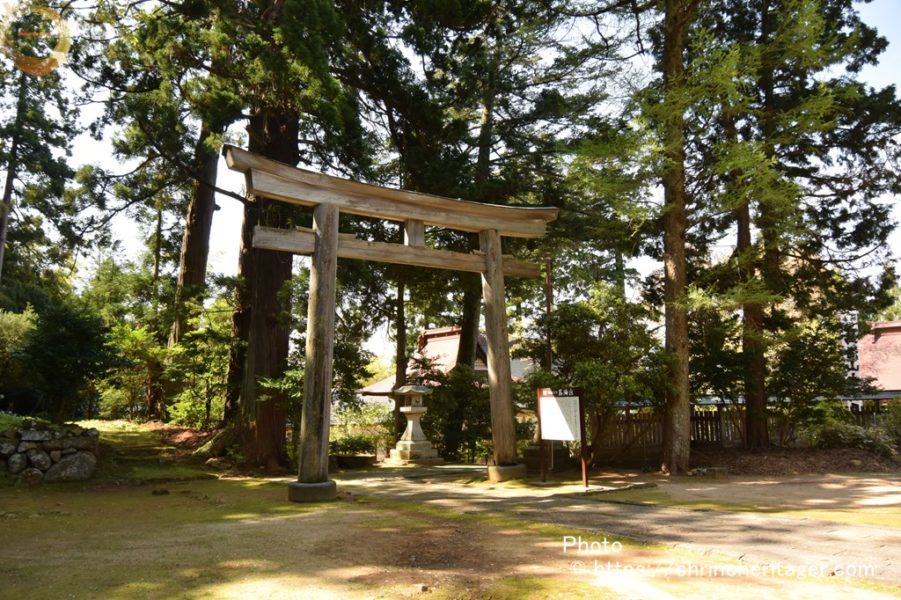
I always heard that the shrine office was absent, but on May 3 it was an annual festival so many people came and it was early in the morning so when I asked you I got a stamp
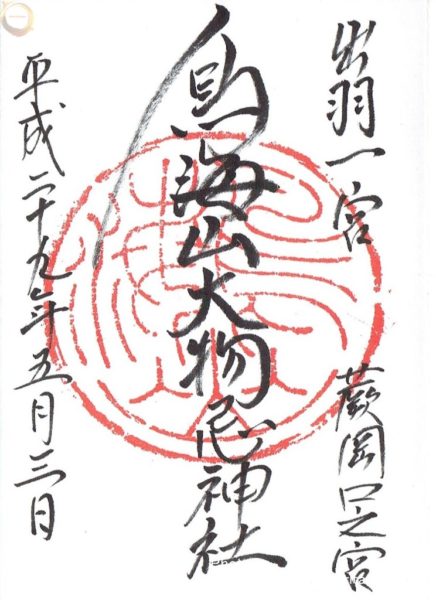
At that time, I heard from the people in the office about the "dai ombei matsuri", an annual festival on May 3rd, where there is an on bei in front of the kami yado.
Return to the approach
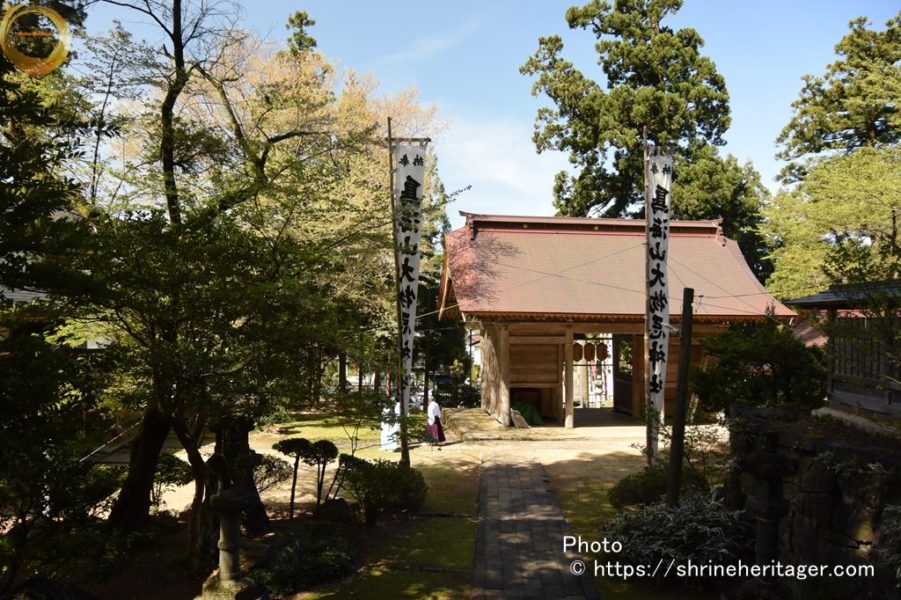
Go through the torii gate, look back, bow
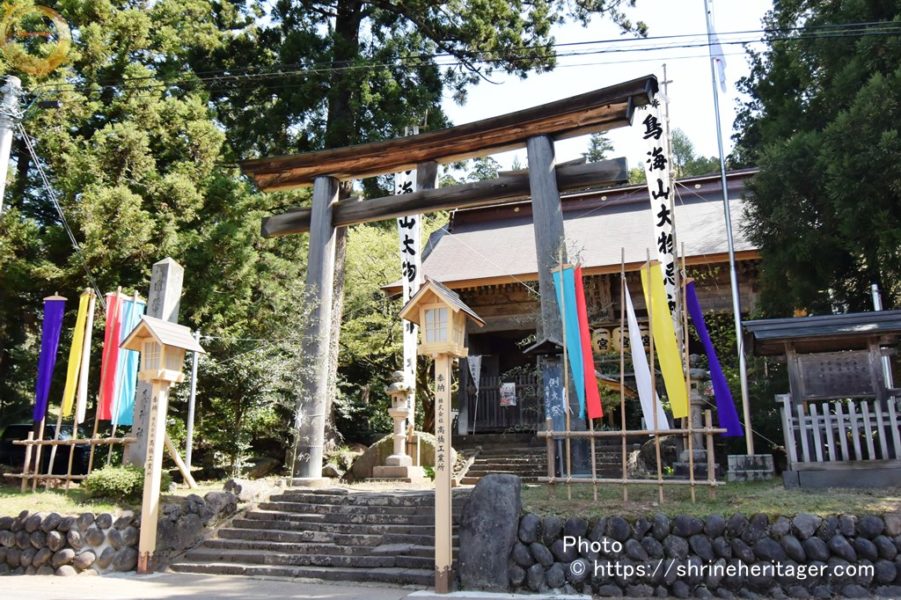
When going to 神宿(kami yado), the 御幣(on bei)was beautifully enshrined.
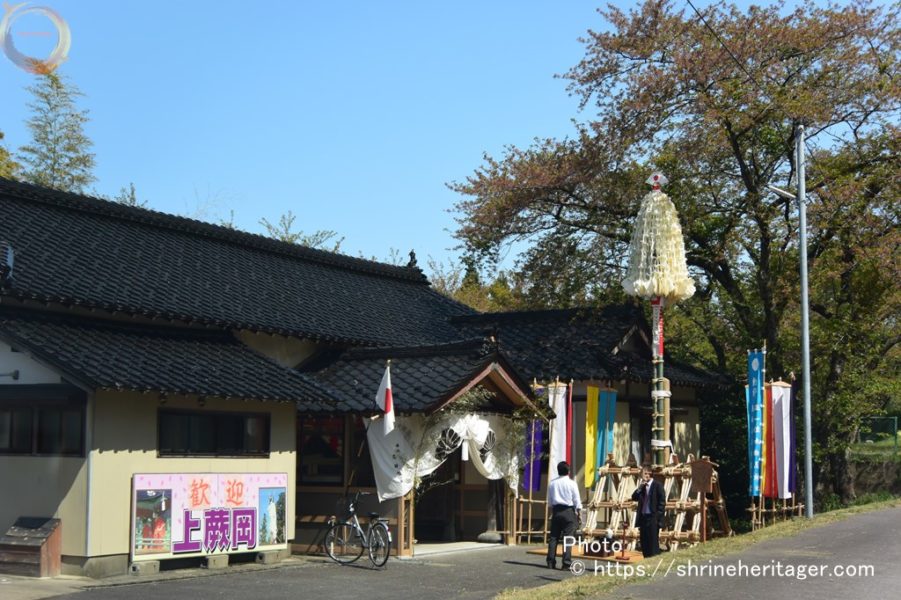
What is the annual festival "dai ombei matsuri" on May 3 every year?
Originally, it was a magnificent festival in which the trainees of Chokaiyama Warabioka competed for the on bei attached to the bamboo at the 10-month training event, and now the youth and the locals dressed as trainees It seems that people in the world take money (on bei)
御幣(on bei)の剣先(ken saki)には
The sun on the front and the moon on the back are drawn on the ken saki of the on bei to pray for the peace of the Mt. Chokai and the abundance of the five grains.
御幣(on bei)in front of Shinjuku (Otorikan)
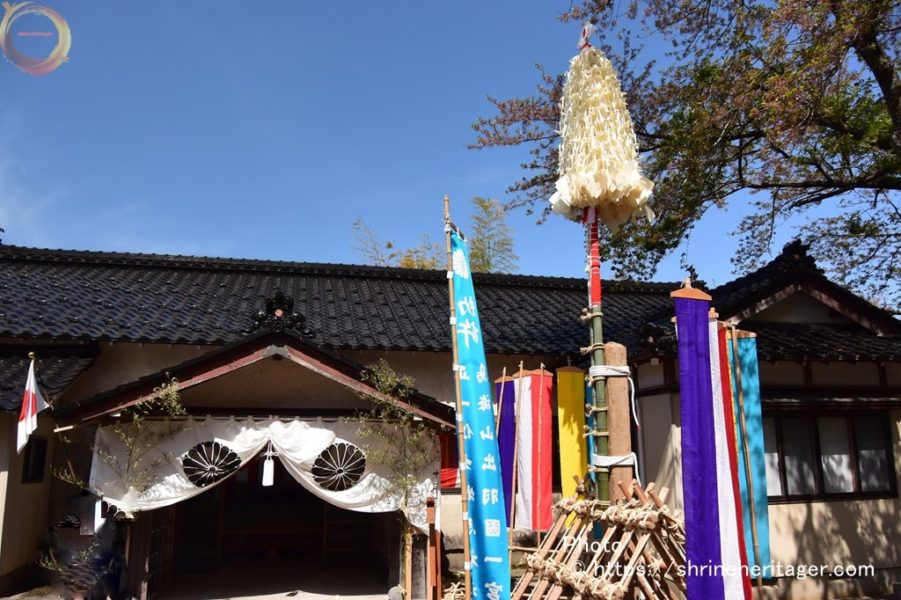
スポンサーリンク
神社の伝承(Old tales handed down to shrines)
I introduce the thing related to this shrine and the literature described.
The tradition of『日本三代実録(nihon sandai jitsuroku)』written on August 4, 2nd year of Genkei (878)
Summary
“The Akita Ryuran (Genkei no Ran) that occurred in the Heian period” A fortune-telling of the Imperial Army's defeat during the years 878 and 879.Since ancient times, the "three gods of the big god, the god of the mountain, the god of the mountain,
and the god of the small", who have had a spiritual experience in the war since ancient times, said that the prayers could not reach because the gods returned to the bandits.
[See original text]国立公文書館デジタルアーカイブス 『日本三代実録』延喜元年(901年)成立 選者:藤原時平/校訂者:松下見林 刊本(跋刊)寛文13年 20冊[旧蔵者]紅葉山文庫
https://www.digital.archives.go.jp/DAS/meta/listPhoto?LANG=default&BID=F1000000000000047721&ID=M2014093020345388640&TYPE=&NO=
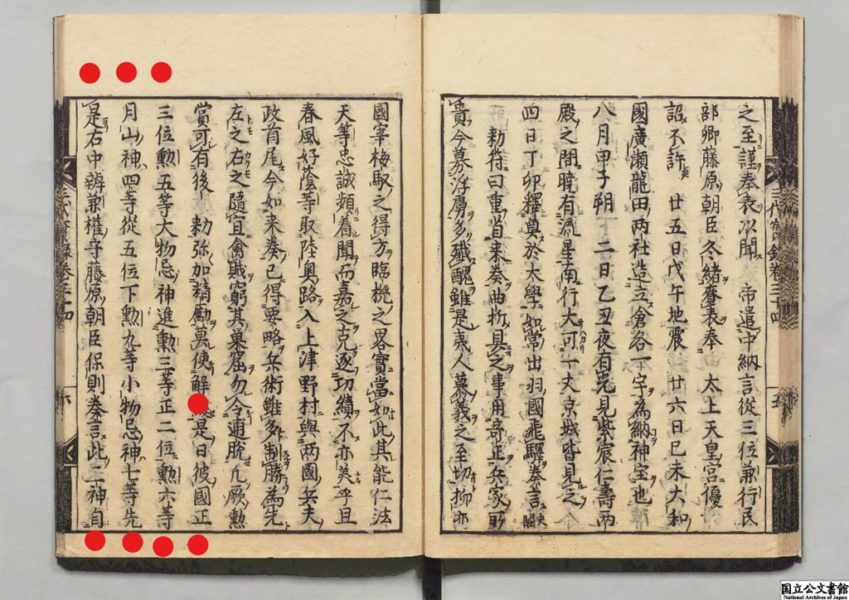
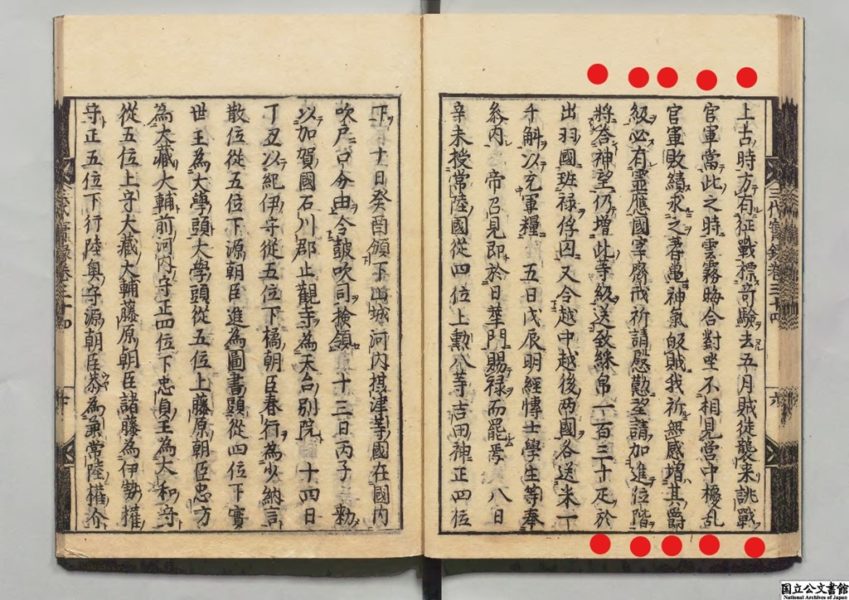
The tradition of『日本三代実録(nihon sandai jitsuroku)』written on February 27, 880
Occurred in the Heian period "Akita Ebisuran (turbulence of the original Kei)" Motokei 2 years (878 years) - Motokei three years (879 years) was a Shojo in response to was welfare in peacetime after pacifying
This is the last in the earlier Middle Ages Is the record of ascension
After that, when the Deputy Kunishi received the official certificate in the article on April 19, 1939 (939) in "Honcho Century", he became the second highest queen.
Commitment
「 出羽国 月山神 正三位勲四等
大物忌神 正三位勲三等 に並び授ける 従二位へ陞叙
・・・・・・・・・・・・・・・・・」
[See original text]国立公文書館デジタルアーカイブス 『日本三代実録』延喜元年(901年)成立 選者:藤原時平/校訂者:松下見林 刊本(跋刊)寛文13年 20冊[旧蔵者]紅葉山文庫
https://www.digital.archives.go.jp/DAS/meta/listPhoto?LANG=default&BID=F1000000000000047721&ID=M2014093020345388640&TYPE=&NO=
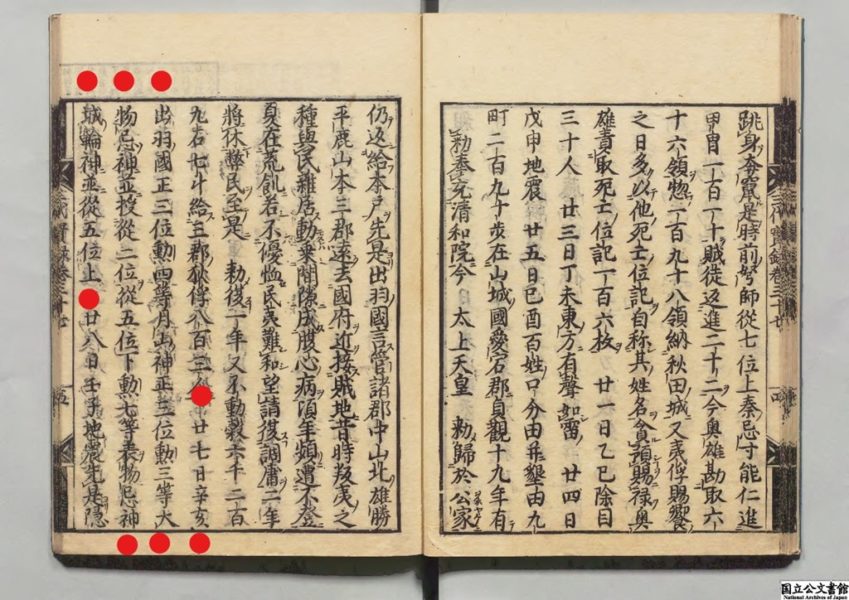
As head office (Okumiya) sits on the summit of Mt. Chokai as Dewa Kuninomiya, the foot of the mountain is called "Kuchinomiya" and is located in two places, "fuku ra" and "warabi oka". The shrine is settled down. It is said that the ritual of the shrine is the reign of Emperor Kinmei 25 years (more than 1400 years ago).
鳥海山大物忌神社(chokaizan omonoimi shrine)(蕨岡口ノ宮)(warabioka kuchi no miya) "hai" (90 degree bow)
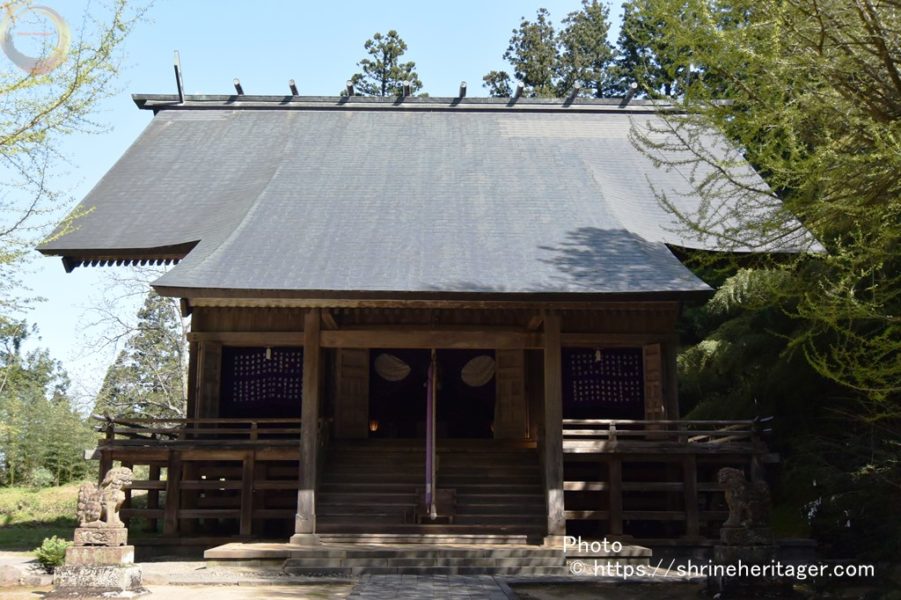
鳥海山大物忌神社(chokaizan omonoimi shrine)吹浦(fuku ra) Kuchinomiya article also please visit
-

chokaizan omonoimi shrine (fuku ra kuchi no miya)
鳥海山大物忌神社(chokaizan omonoimi shrine) is Ichinomiya Dewa Kuninomiya. There are 3 shrines with Mt. The Satomiya called "kuchi no miya" is located in two places, "「吹浦(fuku ra)」" and "「蕨岡(warabi oka)」". It is an old company
続きを見る

